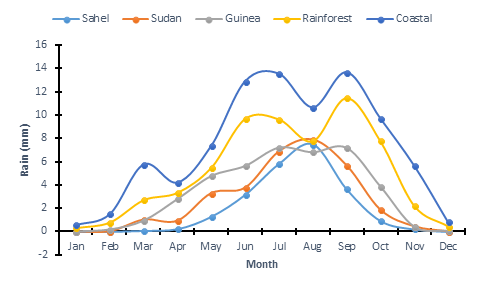Spatial and Seasonal Estimation of Tropospheric Radio Refractivity in Nigeria
Keywords:
Radio refractivity, Electromagnetic propagation, Radio wave, Inter tropical discontinuityAbstract
The spatial and seasonal variation of tropospheric radio refractivity of Nigeria has been studied using meteorological variables (temperature, relative humidity and pressure) retrieved from the archive of the United States’ National Aeronautics for Space Administration (NASA). This work established a seasonal variation. The results also revealed an increase in radio refractivity from minimum of about 270N-units at Abadam to maximum of about 415N-units at Warri. The variation of radio refractivity is synchronous with rainfall in most of the stations especially those in the Guinea Savannah, Tropical Rainforest and Coastal areas where the effects of august break manifest vividly on the curves. Intense refractivity was measured mostly in the tropical rainforest and coastal areas. This could be attributed to the intensity of rain and the length of the wet season in those locations. The Sahel, Sudan and Guinea savannah which experience less rain with short period of wet season recorded reduced refractivity. Just like rainfall, the movement of Inter Tropical Discontinuity (ITD) is also found to be linked to the variation of the radio refractivity. The northward movement of the ITD brings with it elevated refractivity while the southward movement leads to reduced refractivity. This is because the ITD is an element of two high pressure cells which influences its motion. Majorly, the seasonal variation is found to be the product of climate except in some high ground areas where the topography was found to be majorly responsible.

Published
How to Cite
Issue
Section
Copyright (c) 2022 M. M. Tanko, M. S. Liman, W. L. Lumbi, U. S. Aliyu

This work is licensed under a Creative Commons Attribution 4.0 International License.




